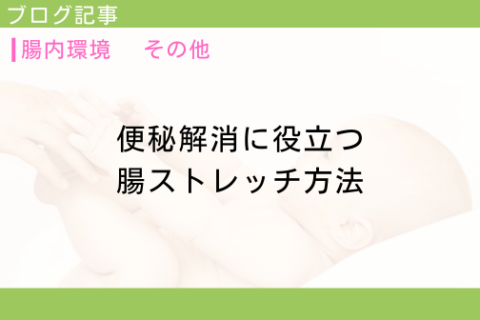For those of you who are book learners, here are some general book recommendations for learning about microorganisms.
Table of Contents
- Foreword
- Introductory section Start here.
(1) “The Amazing World of the Intestines: The Intellectual Adventure of Strong Bodies and Bacteria” by Jun Kunisawa
(2) “Bacteria make us who we are” by Rob Knight
(3) “How to live a life that makes your intestinal bacteria happy” / Masahiko Shirotani - Beginner’s level: A little more detail, but not too much jargon!
(1) “Your Body is 90% Bacteria” / Alanna Collin
(2) “The World of the Microbiome” by Rob Desalle and Susan L. Perkins
(3) “A Clean Parenting is a Good Thing” / Brett Finlay, Marie-Claire Arrieta - Intermediate level: Books that will give you the most active knowledge.
(1) “New Evolutionary Studies from the Viewpoint of Symbiotic Microorganisms” / Masami Hasegawa
(2) “Losing Our Inner Bacteria” by Martin J. Blaser
(3) “Soil and Internal Organs” by David Montgomery and Anne Bickley
(4) “Home is an Ecosystem” / Rob Dunn
5.
(1) Microbes Made the Earth / Paul G. Forkowski
(2) Microbial Ecology / David L. Kachman - Extras
(1) Fermentation and Cultural Anthropology: The Shape of Society as Seen through Microbes / Hiraku Ogura
Translated with DeepL.com (free version)
1.Foreword
All of them are limited to books that I have read carefully all the way through. So, there are not so many.
They are all books that have helped me in writing this article.
This field is in its infancy to growth phase, and in some cases, common sense has changed after five years.
However, many articles from around 2010 are still cited as classics, and I have the impression that even in general books, if they were published in 2015 or later, they are probably not significantly wrong overall.
In a world where some things can only be understood over time and newer information is not always better, there is much to be gained from reading books that are regularly compiled by authorities and excellent science writers in this field.
Overall, the human symbiotic microbiome accounts for a large percentage of the book, but there are also general books on the ecology and evolutionary history of microorganisms themselves, as well as on microorganisms in the environment, which are also being studied.
Also, although I don’t mention it every single time in the text, the translators have done an amazing job.
2.Introductory section Let’s start here.
We recommend these books for those who know little about intestinal bacteria.
That does not mean that they are not like the general gut-activities books, which are not overly aggressive or specialize in sparkling beauty-related topics or spiritualism.
These are books that are properly based on scientific evidence and views, but written in a very easy-to-understand manner.
If you have read these introductory books and want to know more about it! If you have read these introductory books and want to learn more, I suggest you move on to the beginner’s books and onward.
(1) “The amazing world of the intestines as understood by studying 9,000 people: Intellectual adventure about strong bodies and bacteria” by Jun Kunisawa

This one, “The Amazing World of the Intestines: Intellectual Adventures in Strong Bodies and Bacteria from the Study of 9,000 People,” is a fairly new general book, published in April 2023.
The author is Jun Kunisawa, Director of the Center for Health and Medical Microbiology Research, National Institute of Biomedical Innovation, and he is definitely one of the top researchers on intestinal bacteria in Japan.
I am a personal fan.
In 2019, he was also the keynote speaker at the 3rd Annual Conference of the Intestinal Flora Transplantation Clinical Research Society, our affiliated corporation, and even though the content was of a high level without hampering, it was interesting for the general public to hear all the way through.
Isn’t it rare to find a researcher who also has good communication skills? (No disrespect intended.)
The book is quite detailed and easy to understand, perfect for those who want to know the latest information quickly.
As the title says, it mainly deals with gut bacteria out of the human symbiotic microbiome.
(2) “Germs Make People” / Rob Knight

The 2018 publication “Germs Make Us Human” is authored by Rob Knight, a renowned American microbiologist.
The book is based on his 2014 TED talk, and when I saw the video when I first started this work, I took the liberty of recognizing the polo shirt & slender, cool-looking Mr. Knight as my guess. (His name is cool too, isn’t it? Knight?).
But….
I was surprised to see him in Japan in 2018 and he looked like a normal guy…
Maybe it was because he had a double chin and was wearing a slouchy suit. Busy is hard.
Anyway, I was amazed at how science can be explained in such a simple way while maintaining its accuracy! This is a book that rolled off my tongue.
I recommend this book as a reminder to myself that if you can’t write in such an easy-to-understand way, you can’t say you have a good understanding of the subject.
The book is simple, but not too simple, and references are provided for almost every description. The main topic of this book is also the human symbiotic microbiome, especially bacteria.
(3) “How to Live a Life that Makes Your Gut Bacteria Happy” / Masahiko Shirotani

This is “How to Live a Life that Makes Your Intestinal Bacteria Happy” published in 2019.
The author is Masahiko Shirotani, director of Luke’s Ashiya Clinic.
He is the executive director of the Intestinal Flora Transplantation Clinical Research Association, which is our affiliated corporation.
Dr. Shirotani suffered from ulcerative colitis and had his entire colon removed, and he talks about his experience in his book.
The symbiotic relationship between intestinal bacteria and the host is sometimes called “holobiont,” and one of the shortcomings of Western medicine is that it sees the trees and not the forest, in other words, it does not see the forest as a holobiont.
The author is well versed not only in Western medicine but also in Oriental medicine, psychology, etc., and is one of the few people who deal with intestinal bacteria from a broad perspective.
3.Beginner’s Edition A little more detailed, but no chunky jargon.
If the introductory edition is not enough for you, here are some beginner’s edition books.
Recommended for those who want to get inside the gate, but don’t want too much complicated terminology.
(1) “Your Body is 90% Germs” / Alanna Collin

Next up is “amzn.to/3u3jzzI,” originally published in 2015 and a book in Japan in 2016.
The author, Alanna Collin, is a science writer with a PhD in evolutionary biology.
She became interested in the world of the microbiome when she had a life-saving experience with antibiotics and began to wonder if her subsequent illness was caused by a disturbance in her gut bacteria caused by antibiotics.
As you would expect from a professional writer, he is a good storyteller and his research is tremendous.
I would recommend this book first to anyone who wants to learn more about the microbiome that lives symbiotically in our bodies than an introductory book.
(2)“The World of the Microbiome,” Rob Desalle & Susan L. Perkins.
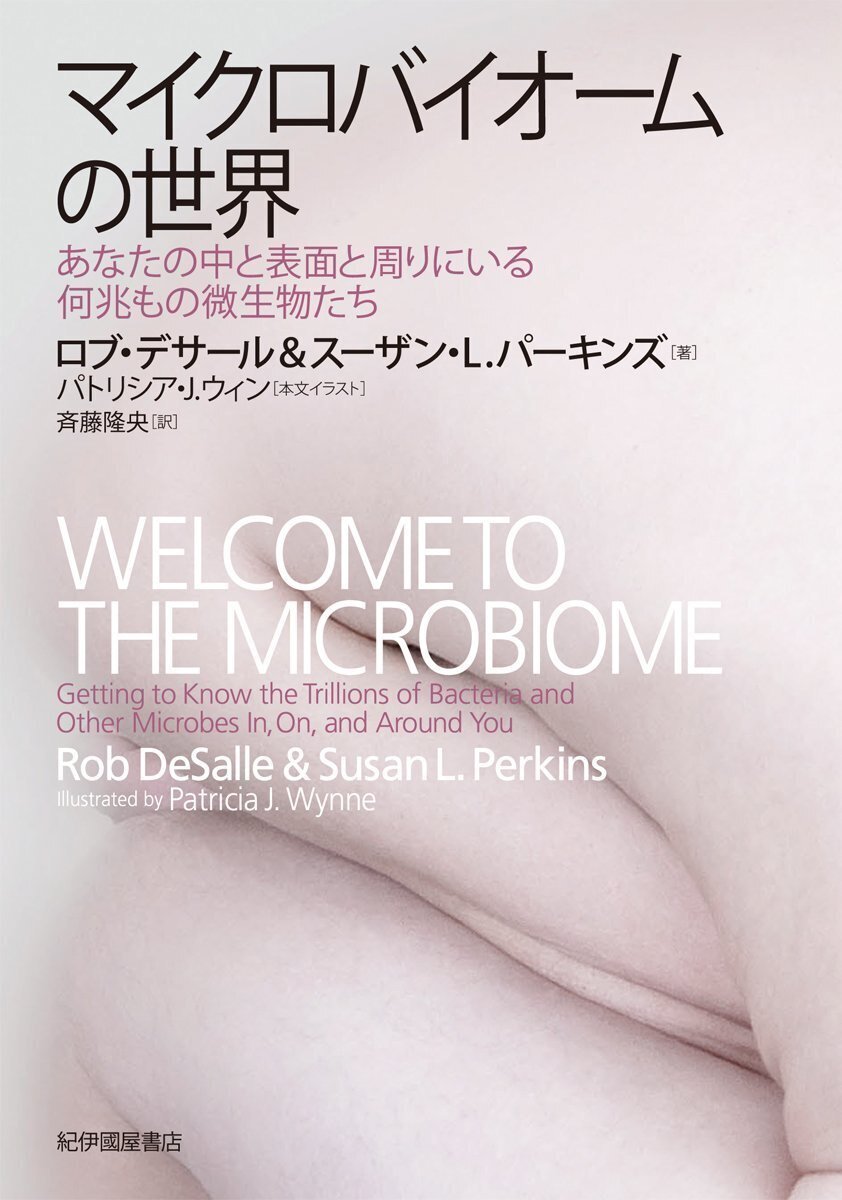
The 2016 publication “The World of the Microbiome–Trillions of Microbes in, on, and Around You” is another good book for an overview of the microbiome.
Like “Your -” above, it focuses on the human symbiotic microbiome, but if the former revolves around the perspective of the relationship between our health and bacteria, this one might be said to be more about the microbes’ perspective.
The reason for this may make a little more sense when you look at the profiles of the authors. They are curators at the American Museum of Natural History, and are probably accustomed to viewing the facts from a place that is a bit removed from the practical benefits.
The book was produced in conjunction with an exhibit on the microbiome that ran from November 2015 to August 2016 at the American Museum of Natural History, and the contents somewhat make you feel as if you are touring the exhibit in order.
I also found the brief explanation of how the next generation sequencers used to identify microbial species work to be informative.
(3)The Good Thing About Raising a Clean Child / Brett Finlay, Marie-Claire Arrietta.

Published in 2017, “Raising Strong and Smart Kids” is full of good things! -The Gut Bacteria Classroom for Raising Strong and Smart Children is a book by prominent Canadian microbiologists.
Both have children and have had contact with children in their work, so they summarize the latest scientific papers on pregnancy and childbirth and the intestinal bacteria in children in an easy-to-understand manner.
In this NOTE, we also discuss the question, “By what age are intestinal bacteria determined? This is a series of articles titled “Bacteria as they grow from baby to child,” but I recommend it to those who want to know more about this field alone.
There is a similar book titled “A Child’s Life is Determined by Gut: How to Raise the Strongest Immune System by Age 3,” which is based on a Q&A format and is even easier to read.
4.Intermediate level: Books that provide the most useful knowledge
Once you are familiar with the world of microorganisms, it is time to start reading the books we will introduce hereafter.
If you want to gain knowledge quickly, simple books are good, but if you want to understand the world properly, it is better to read books in which important information is presented in the raw language before it is translated into “simple language”.
(1)“New Evolutionary Studies from the Viewpoint of Symbiotic Microorganisms” / Masami Hasegawa
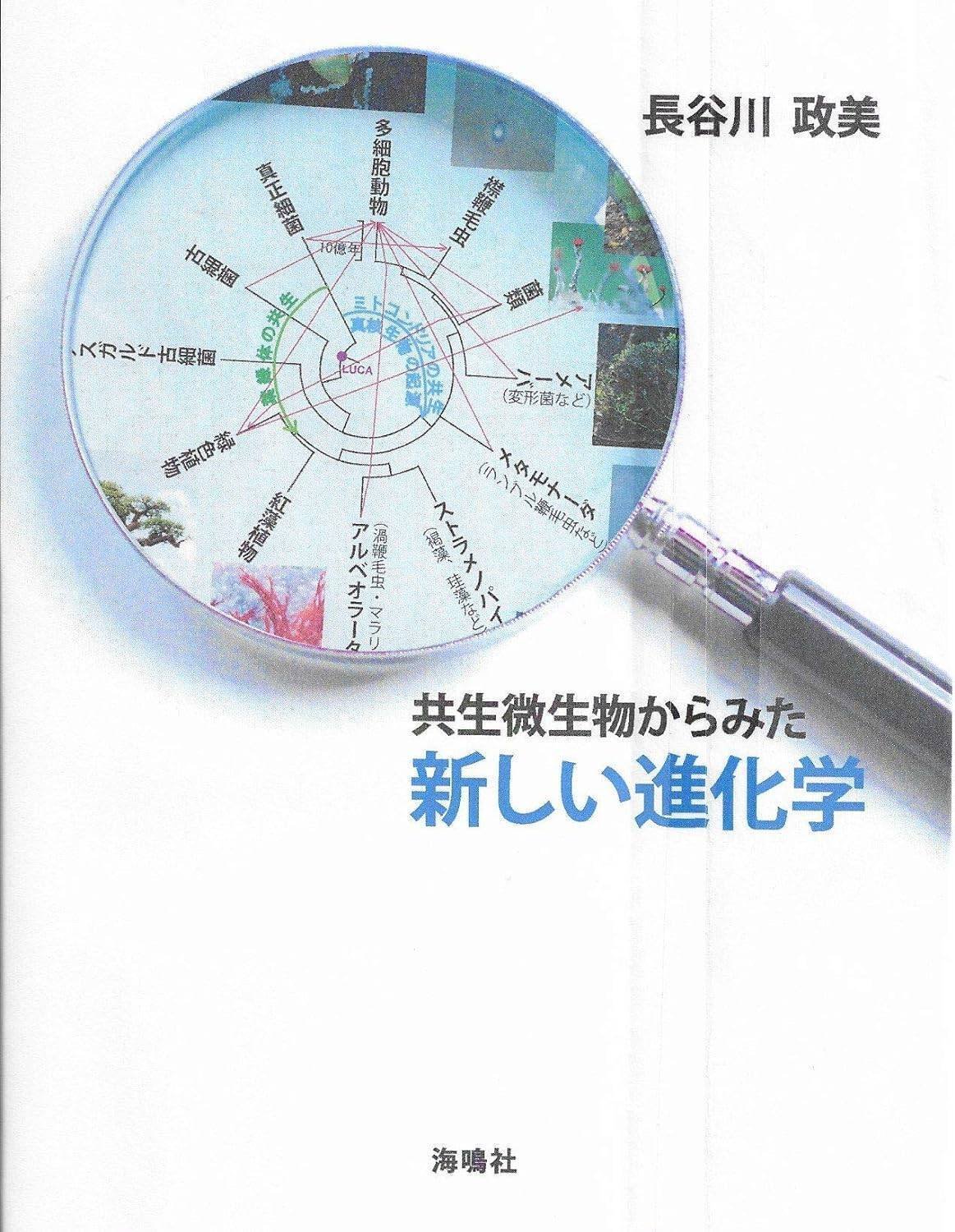
The New Evolutionary Science from the Perspective of Symbiotic Microbes, published in 2020.
As soon as I saw the table of contents of this book, I had to reconsider the raison d’etre of my NOTE.
It is such a comprehensive book that summarizes our relationship with microorganisms based on the latest research.
As stated in the preface, this book is a compilation of what the author has studied by himself after his retirement from active duty, so you can look at various researches from a rather detached point of view.
The book provides an understanding of symbiosis with microorganisms, including non-human creatures, on the vertical axis of “evolution. It will be more useful as a reference book than as a story book.
(2) “Losing Our Inner Bacteria” / Martin J. Blaser
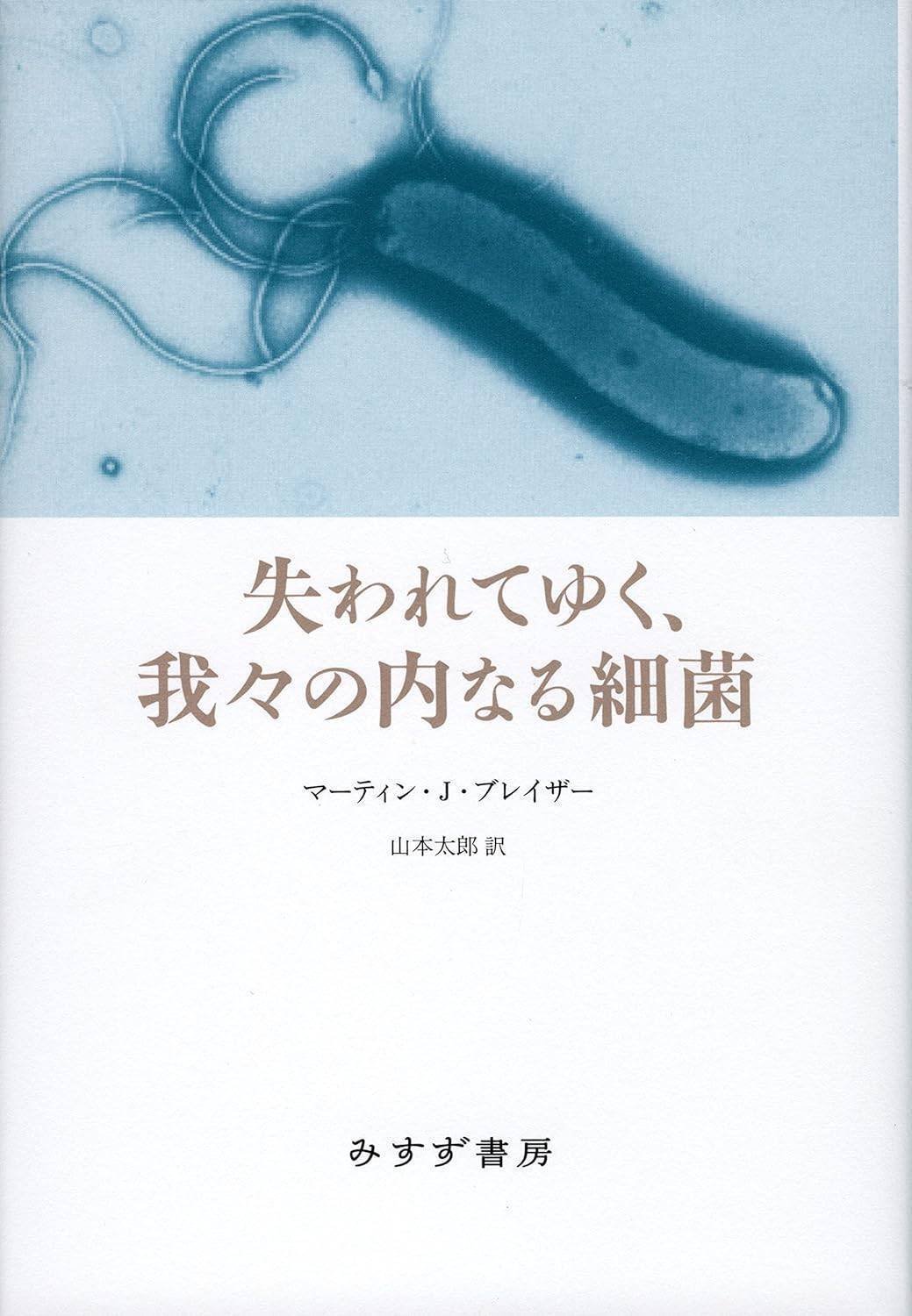
Losing Our Inner Bacteria“ is still one of the five ”gut bacteria-related books to read,” even though it was published less than a decade ago in 2015.
The author, Martin J. Blazer, is also a leading microbiologist and a leader of the Human Microbiome Project (HMP), which is the vanguard of microbiome research.
Along with the aforementioned Rob Knight, or perhaps this is a bigger name, he is no stranger to the industry.
For many years, the author has been conducting research from the viewpoint of “Is H. pylori really that bad? and later conducted extensive research on the effects of antibiotics on commensal bacteria.
He is particularly knowledgeable about the relationship between obesity and bacteria, and is a man of keen insight who early on sounded the alarm about the loss of bacterial diversity.
(3)“Soil and Internal Organs”/David Montgomery, Anne Vickrey
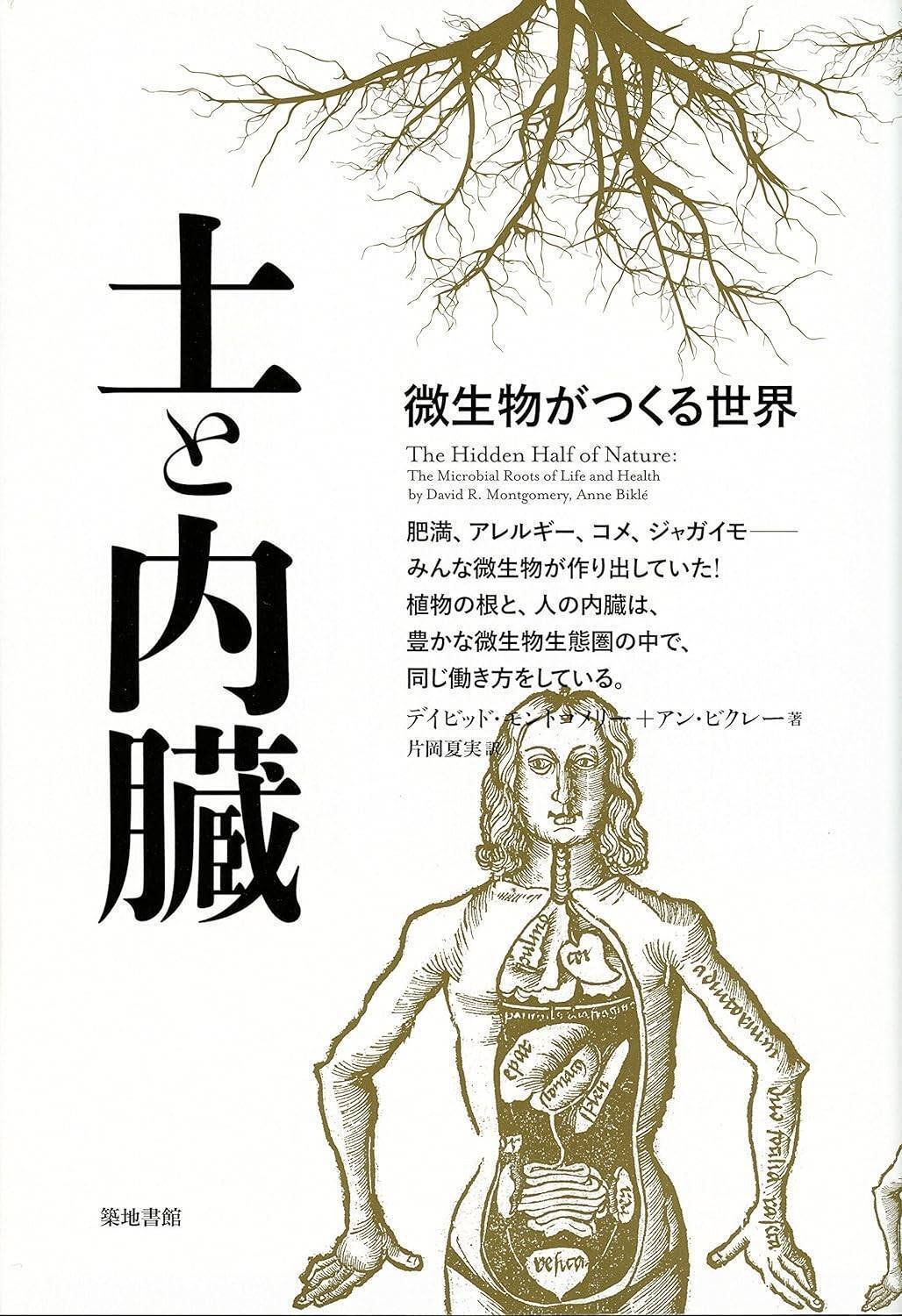
Next up is the 2016 publication “Soil and Viscera: A World Made of Microbes,” which we present to you with love.
I think it’s safe to say that this book, created by a geologist husband and his wife, a professional environmental planner, almost succeeds in its marketing based on the impact of the cover picture and the title alone.
And when you open the pages, you will not be betrayed by any one page.
The first half of the book focuses on soil microorganisms living in rich fields, and the second half focuses on the human symbiotic microbiome with a cancer-stricken wife as the main character.
All of it is artfully put together by the wisdom and enthusiasm of the authors and their wonderful editorial team.
Yes, the soil and our bodies are connected! And scientific, too!
If my house were to suddenly catch fire, next to the five novels I just can’t miss, the handmade album and letters my husband gave me, and the wooden yoga block I just bought, this is the one book I would definitely carry out if I could still hold it. (I’m halfway there.)
But it’s number one on my list of work-related books! (What kind of follow-up?)
(4)“Home is an Ecosystem” / Rob Dunn
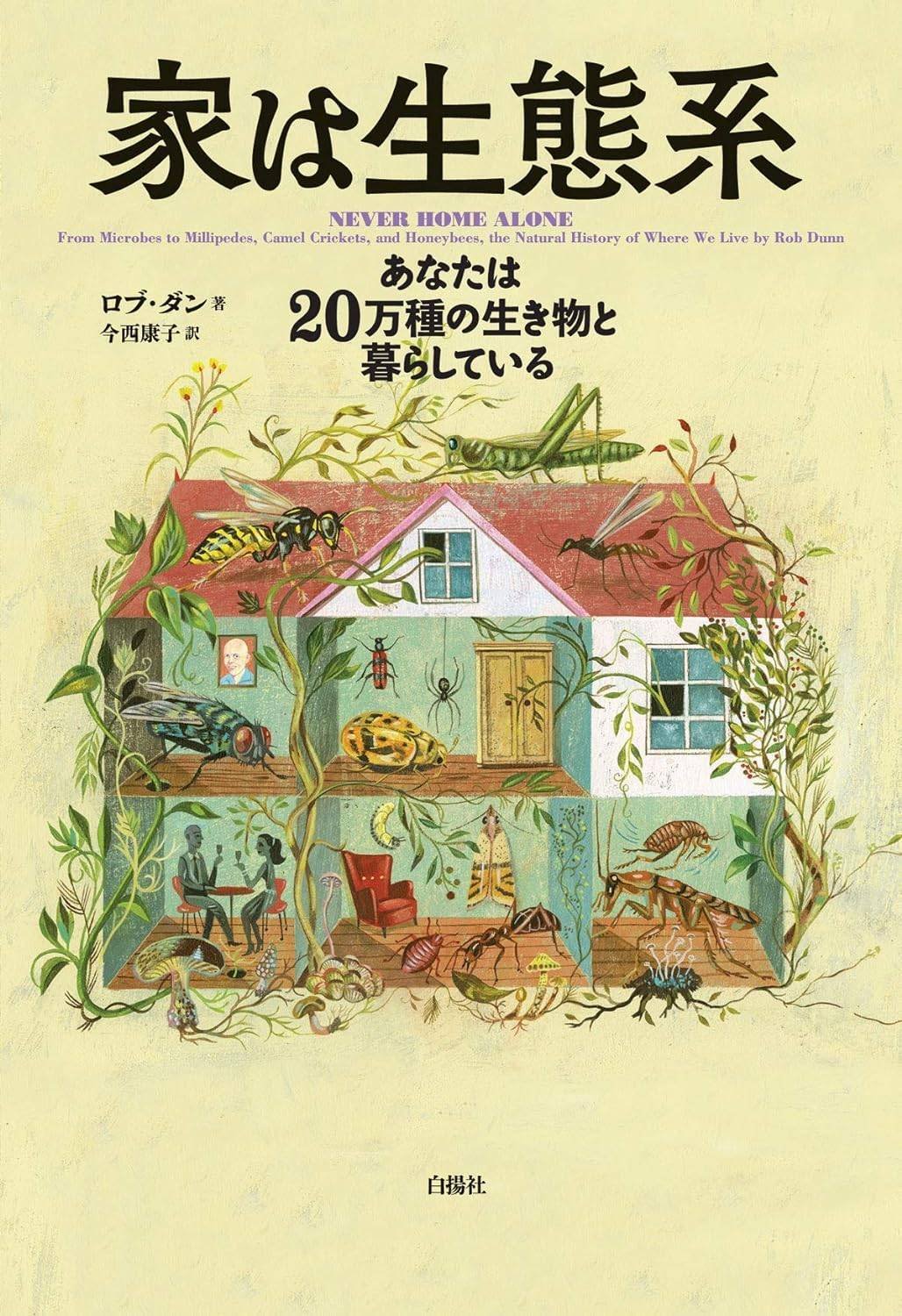
In a new book published in 2021, “Home is an Ecosystem – You Live with 200,000 Species,” you will not find the human microbiome in the sense of living in the human body, except for a very few.
Instead, it presents a series of microbiomes that live in our homes. Microbial ecology used to be all about going out into extreme environments to study them, but research focusing on the bacteria around us is quietly gaining momentum.
The author is Rob Dunn, a professor at North Carolina State University, and the mug shot in the book looks like something out of Harry Potter.
Before you know it, the book makes you feel as if you are under the spell of seeing the microscopic world.
When it comes to indoor environmental microorganisms in Japan, BIOTA is the one to talk about, isn’t it?
Ever since I saw their website for the first time, I have been aiming to work with them someday while improving myself.
The bacteria that live in symbiosis with me and the bacteria around me.
I want to feel their presence because I can’t see them.
5.Advanced section For those of you who have already had a good overview of this field
The books listed here are by no means easy to read.
They are recommended for enthusiasts who want to immerse themselves more and more in the world of microorganisms.
(1)“Microbes Made the Earth” / Paul G. Forkowski
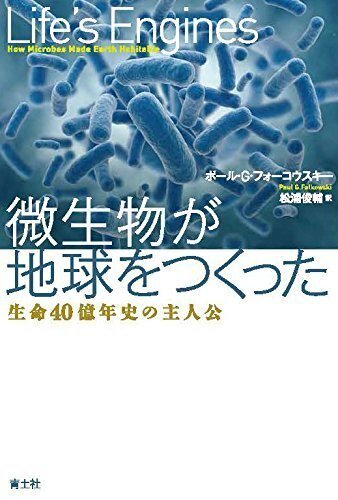
I first picked up a copy of “Microbes Created the Earth: The Protagonist of the 4 Billion Year History of Life” at my local library.
I had a gut feeling that I had to read it, but I didn’t think it was a book I could finish within the loan period, so I went ahead and ordered it from Book-Off Online.
If I had borrowed it for only two weeks and read the first part then, I probably would not have bought it.
The author, a marine biologist specializing in microbial evolution and biochemistry, was too difficult for me, a chemically challenged person.
So this book is not considered an advanced book for those who can do chemistry.
However, the second half of the book suddenly becomes more interesting and you will be able to imagine (sort of) what is going on behind the phenomena that you can see as a result of medical papers, etc., so it is worth reading.
In other words, it is a very good book. It is a book that I have vowed to read again.
(2)“Microbial Ecology” / David L. Karchman
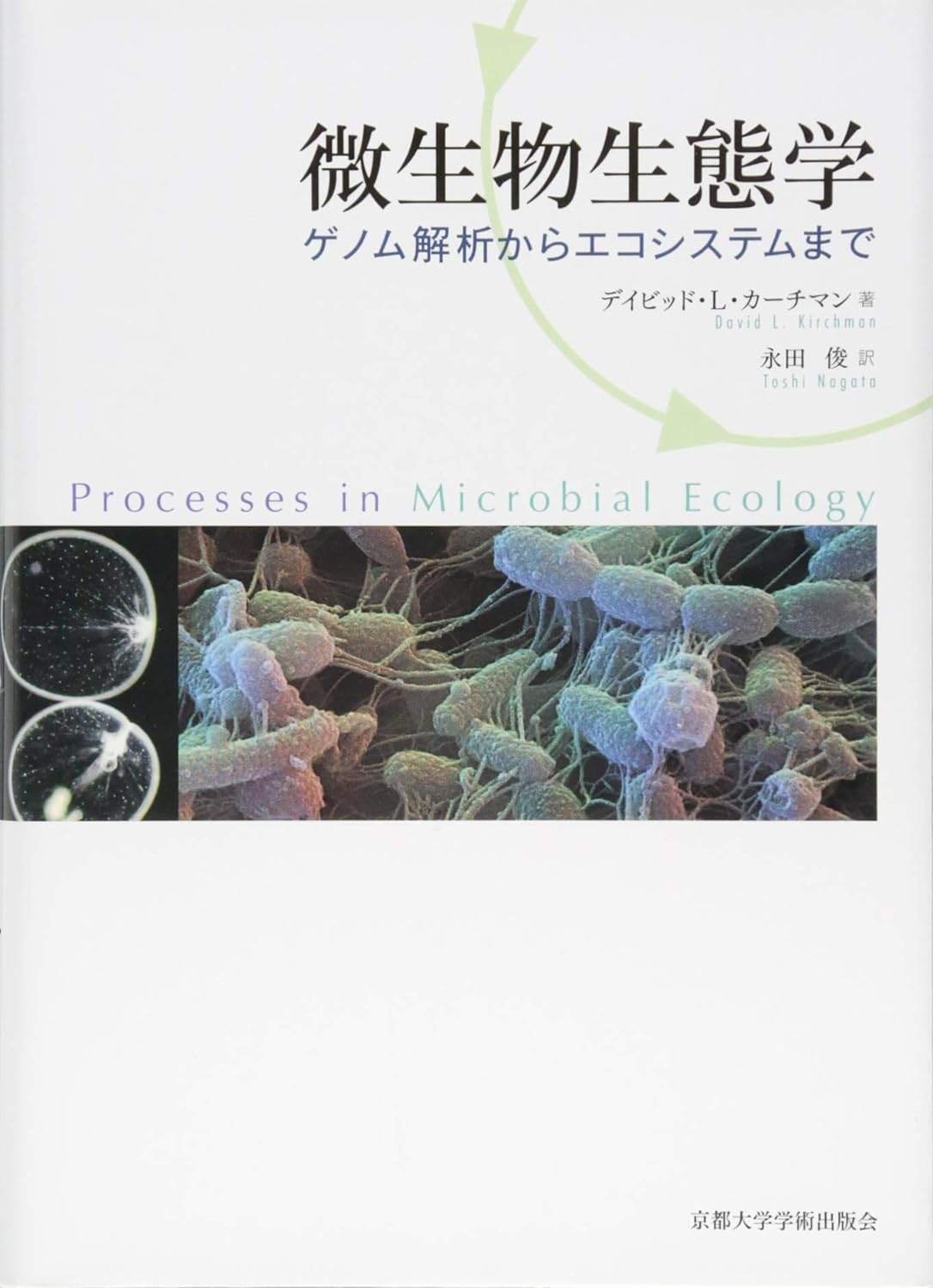
Microbial Ecology: from Genomics to Ecosystems, published in 2016, wasn’t this kind of book, was it? But we definitely need it! But it’s absolutely necessary!
Microbiology is a discipline that began as a part rather than a whole, and because of this, it is often subdivided into many specialties. However, in light of the fact that almost all life forms coexist with microorganisms, I feel that it is a field that all (especially biological) scientists should know.
That seems to be the aim of this book, which attempts to cover all aspects of the microbial world.
It is quite difficult and this is no longer a general book, but a completely specialized book.
I have just struggled through the first 10% or so of the book, thinking that one day I will devote myself to it so that it will become my bible.
So far, it has only served to keep me on my toes when I have it in the room.
If I find another book that looks interesting, I will introduce it to you.
6.Extra
(1)“Fermentation Cultural Anthropology: The Shape of Society from the Viewpoint of Microbes” by Hiraku Ogura
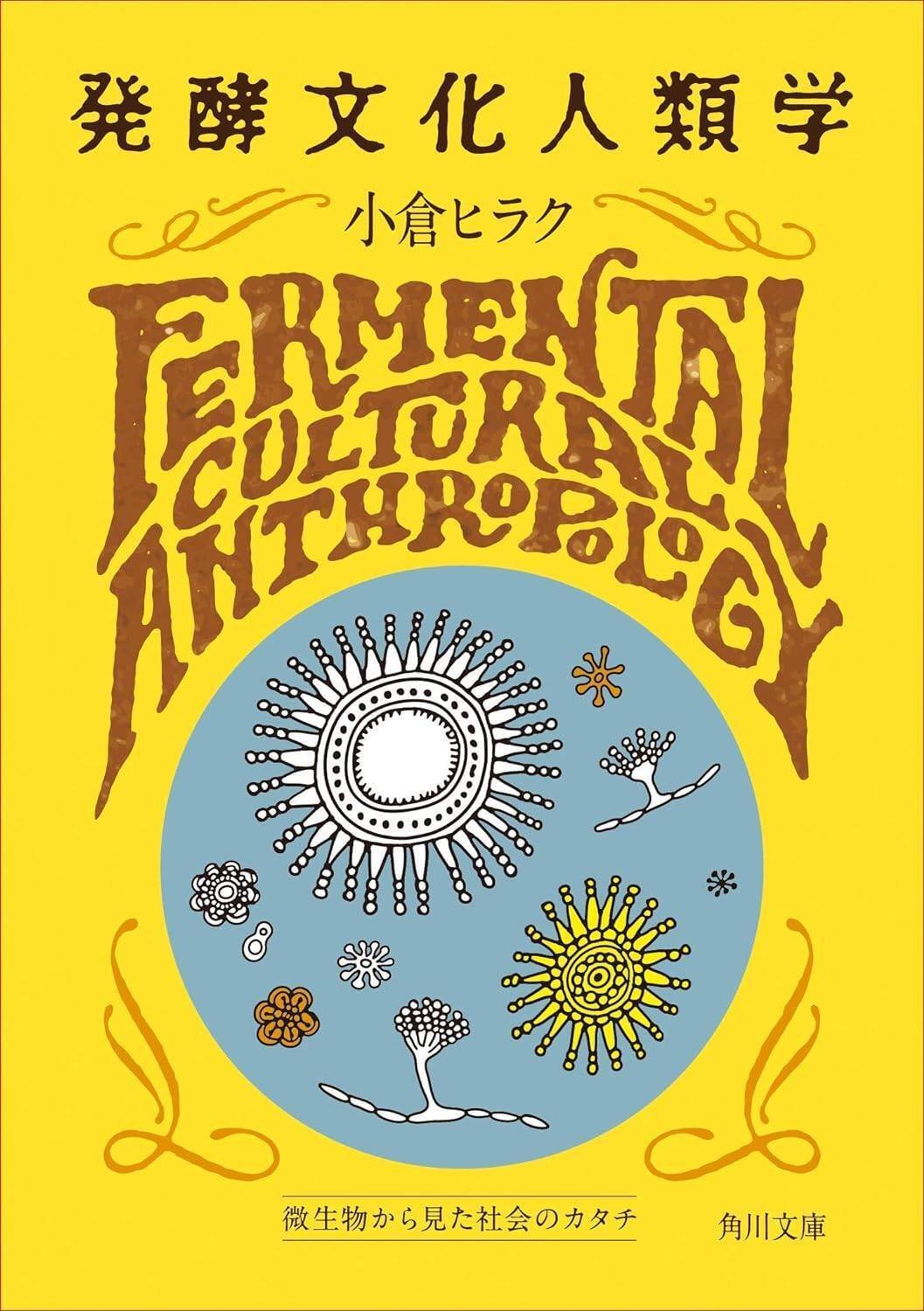
Fermentation Cultural Anthropology: The Shape of Society from the Microbial Perspective,“ published in 2020, is a book that focuses specifically on the phenomenon of ”fermentation” as a result of the work of microorganisms rather than on the microorganisms themselves.
The author, Hiraku Ogura, originally studied cultural anthropology at university and worked as a designer.
Based on his own experience that his atopic dermatitis and asthma were improved by fermented foods, he has been working as a “fermentation designer,” a designer who is knowledgeable about microorganisms.
She has a humanities background like me, but she is bizarrely knowledgeable about microorganisms, so I decided to study with a feeling that my ass was on fire.
This is an important book that pushed me back when I felt that the world of microorganisms has many overlaps with studies such as the humanities and philosophy.








